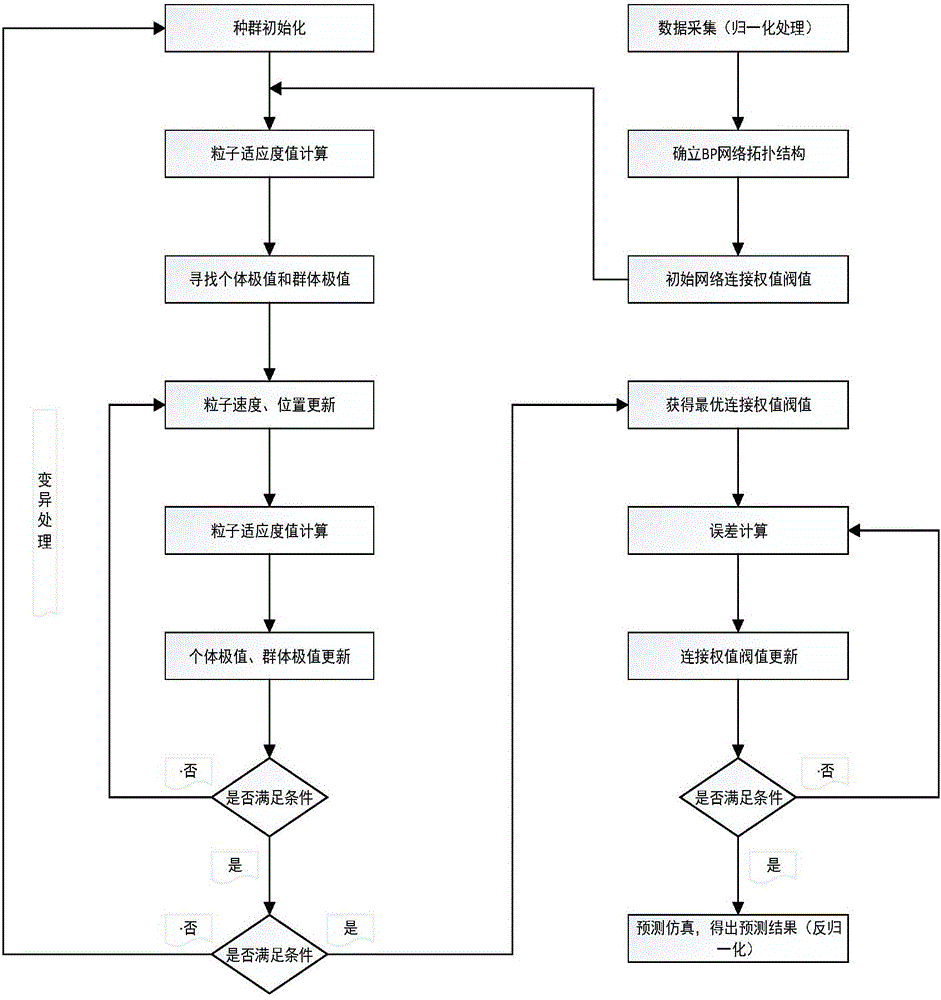Photovoltaic power station power generation amount predication method based on adaptive mutation particle swarm and BP network
A technology of mutated particle swarms and photovoltaic power plants, applied in the field of grid-connected photovoltaic power generation, can solve problems such as slow network convergence, intermittent, and reduced security and stability of the power grid system
- Summary
- Abstract
- Description
- Claims
- Application Information
AI Technical Summary
Problems solved by technology
Method used
Image
Examples
Embodiment Construction
[0055] In order to enable those skilled in the art to better understand the technical solutions in the present application, the technical solutions in the embodiments of the present application will be clearly and completely described below in conjunction with the drawings in the embodiments of the present application. Obviously, the described The embodiments are only some of the embodiments of the present application, but not all of them. Based on the embodiments in this application, all other embodiments obtained by persons of ordinary skill in the art without creative efforts shall fall within the scope of protection of this application.
[0056] Based on the adaptive mutation particle swarm and BP network photovoltaic power generation forecasting method, it includes the following steps:
[0057] (1) Collect data samples: select the main factors that affect photovoltaic power generation during the period of 6:00-18:00 every day within 12 days of a month, including solar irr...
PUM
 Login to View More
Login to View More Abstract
Description
Claims
Application Information
 Login to View More
Login to View More - R&D
- Intellectual Property
- Life Sciences
- Materials
- Tech Scout
- Unparalleled Data Quality
- Higher Quality Content
- 60% Fewer Hallucinations
Browse by: Latest US Patents, China's latest patents, Technical Efficacy Thesaurus, Application Domain, Technology Topic, Popular Technical Reports.
© 2025 PatSnap. All rights reserved.Legal|Privacy policy|Modern Slavery Act Transparency Statement|Sitemap|About US| Contact US: help@patsnap.com



